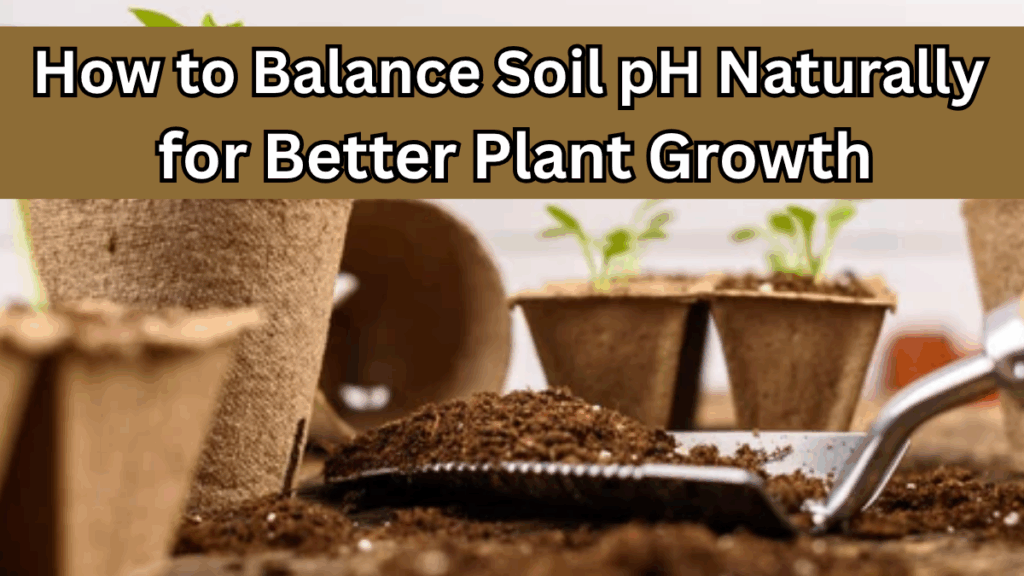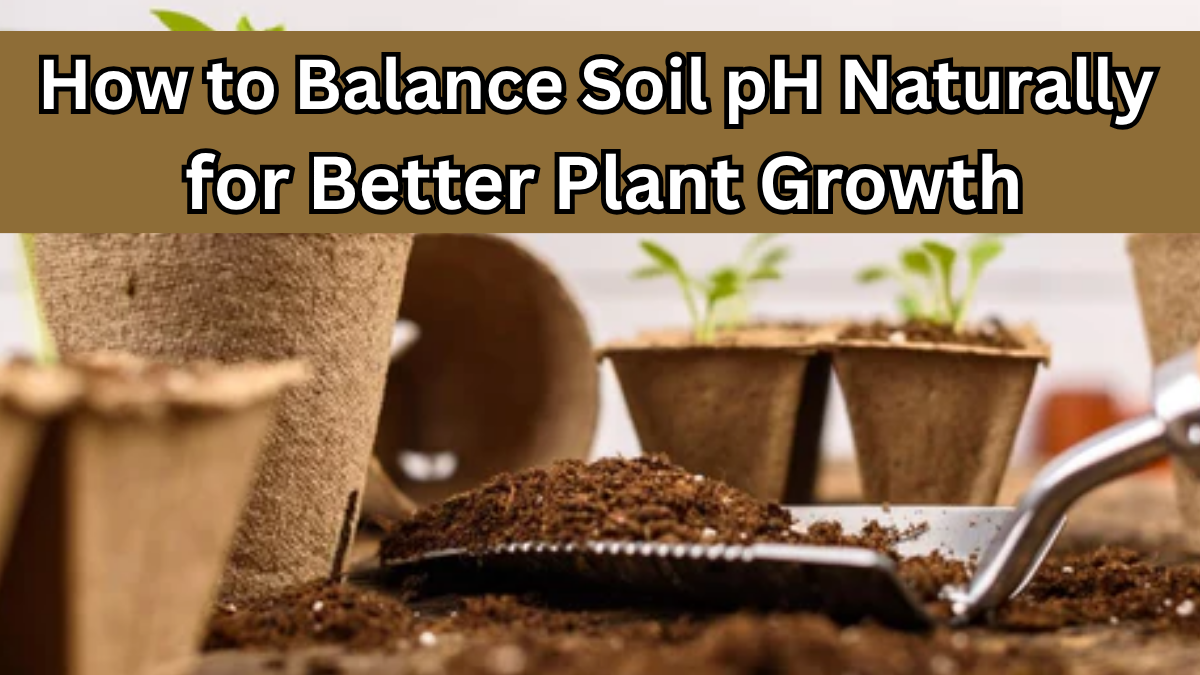Healthy soil is the foundation of thriving plants. If your garden is struggling, the issue might not be watering or sunlight — it could be the soil’s pH. Maintaining proper soil pH balance is essential for nutrient absorption and overall soil health. Fortunately, there are effective natural methods to adjust your soil pH without using harsh chemicals.

What is Soil pH and Why It Matters?
Soil pH measures how acidic or alkaline your soil is, ranging from 0 (very acidic) to 14 (very alkaline). Most plants prefer a slightly acidic to neutral soil (pH 6–7), but specific plants have unique preferences.
-
Acidic soil (pH < 6): Can stunt growth and limit nutrient availability.
-
Neutral soil (pH 6–7): Ideal for most vegetables and flowers.
-
Alkaline soil (pH > 7): Can cause nutrient deficiencies like iron chlorosis.
Maintaining proper soil pH balance improves soil health, promotes strong root systems, and ensures your plants thrive naturally.
Signs Your Soil pH Might Be Off
Look for these visual cues:
-
Yellowing leaves (especially in new growth)
-
Poor plant growth despite adequate watering
-
Stunted flowering or fruiting
-
Soil crusting or hard layers on the surface
Natural Methods to Adjust Soil pH
Lowering Soil pH (Making Soil More Acidic)
If your soil is too alkaline, these natural methods can help:
| Method | How it Works | Recommended Use |
|---|---|---|
| Sulfur | Converts to sulfuric acid in soil | Sprinkle 1–2 lbs per 100 sq ft |
| Compost | Adds organic acids gradually | Mix 2–3 inches into topsoil |
| Coffee Grounds | Slightly acidic | Sprinkle around acid-loving plants |
| Pine Needles | Slowly acidifies over time | Mulch around shrubs and flowers |
Raising Soil pH (Making Soil More Alkaline)
If your soil is too acidic, try these natural solutions:
| Method | How it Works | Recommended Use |
|---|---|---|
| Garden Lime | Neutralizes acidity | Apply 5–10 lbs per 100 sq ft |
| Wood Ash | Contains potassium and raises pH | Use sparingly, 1–2 lbs per 100 sq ft |
| Crushed Eggshells | Slowly releases calcium carbonate | Mix into soil when planting |
Maintaining Soil pH Balance
-
Rotate crops to prevent nutrient depletion
-
Add compost regularly to maintain soil health
-
Avoid excessive chemical fertilizers that alter pH quickly
-
Conduct a soil test every 1–2 years to monitor changes
Tips for Testing Soil pH at Home
-
Use a soil pH meter for precise readings
-
Mix soil with distilled water, let it settle, and test with pH strips
-
Test multiple spots in your garden to get an average reading
FAQs About Soil pH Balance
1. How often should I test my soil pH?
Test your soil at least once a year, ideally before the planting season, to ensure proper soil pH balance.
2. Can I use vinegar or baking soda to adjust soil pH?
Yes, vinegar can lower pH and baking soda can raise it temporarily, but these are short-term solutions. Prefer natural methods like compost or lime for lasting effects.
3. Does soil pH affect fertilizer efficiency?
Absolutely. Incorrect pH can lock nutrients, making fertilizers less effective. Maintaining correct soil health ensures nutrients are fully absorbed.
4. Are there plants that tolerate extreme pH levels?
Yes, blueberries and azaleas prefer acidic soil, while lavender and asparagus thrive in slightly alkaline soil.
Click here to learn more
